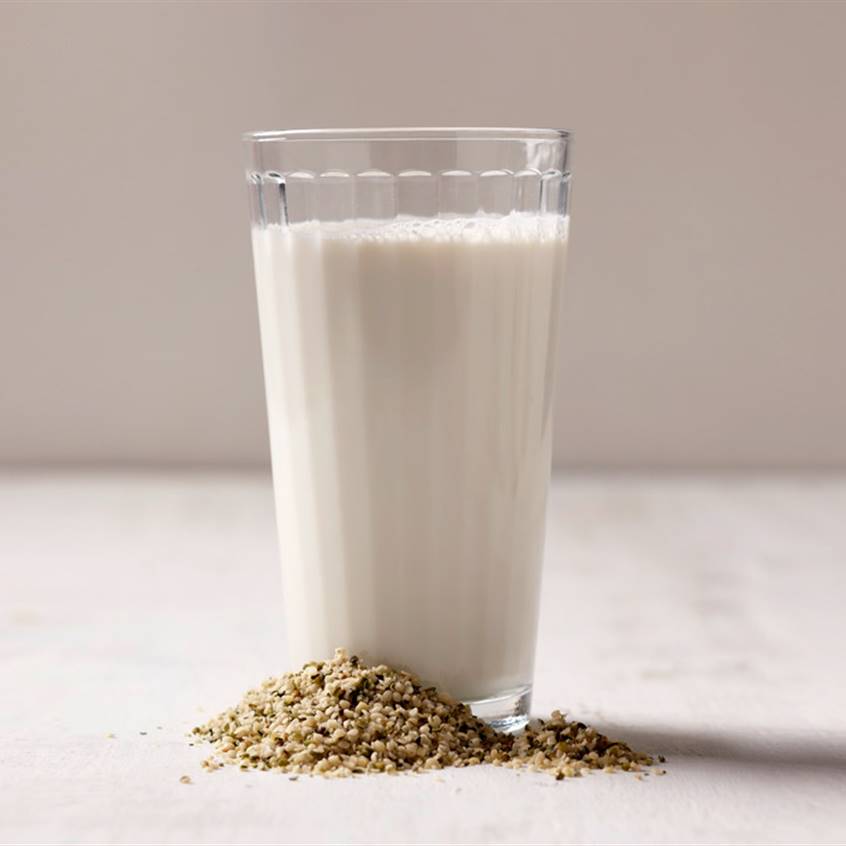Nutritional hemp is rich in quality protein, omega-3 and magnesium. Learn how to prepare a delicious nutty-flavored tofu with it.

Nutritional hemp is a seed full of surprises. Although it seems that its consumption has just been discovered in the West in recent decades, its use in Asia and Europe has been millennial. And we can not only add it to smoothies and salads… We can also make with it a delicious tofu rich in proteins very little allergenic, better known by its English name hemp-fu.
In this article we tell you how to make your own hemp tofu or hemp-fu, but let’s see first the properties of hemp seeds and the advantages of using them to make tofu.
INNOCUOUS SEEDS WITH MULTIPLE USES
In the last century, hemp was limited by control over the cultivation of psychotropic varieties but new consumer regulations have put the most innocuous typologies back on the table.
That is why nutritional hemp is a different product from marijuana, which lacks narcotic effects and has very varied and interesting nutritional properties. To avoid confusion, it is always advisable to buy it packaged and in stores specializing in organic food.
In the time of our grandparents, toasted hemp seeds were still used as an appetizer snack, as if they were pipes. And it was customary to make infusions with them to facilitate sleep in children. Later, they remained as a food for birds, because of the hardness of their shell.
But today these seeds are sold husked, so that they are not only much easier to eat but also gain in flavor and nutritional value.
WHY MAKE TOFU WITH HEMP
There are many advantages of using hemp seeds to make tofu and are basically due to its valuable nutritional properties:
- Rich in complete proteins: One of the reasons why tofu can be made with hemp is its extraordinary richness in proteins of the highest quality, more than 33% of its dry weight. These proteins contain all the essential amino acids in proportions similar to those of soy and egg, plus a surprisingly high extra arginine.
That makes it an ideal supplement for vegan diets, for growth stages and for people who play sports when their albumin curdles coagulates in the form of tofu. - Fats in an ideal proportion: Even more surprising is its baggage in essential fatty acids, which exceeds 44%. It has a very high proportion of omega-3 and omega-6 polyunsaturates, in the ideal ratio for human health.
- Rich in antioxidants: These fats are accompanied by phytonutrients that increase immune function, thin the blood and strengthen cell and neuronal membranes. They are proven to reduce high cholesterol, triglycerides and blood pressure. They are especially beneficial for strengthening the nervous system and cognitive functions.
- Remineralizers: Among the minerals, hemp stands out for its enormous contribution of organic magnesium, an effective relaxant of the nervous system. The amounts of iron, calcium and zinc are also important.
- Rich in vitamins: Among the vitamins, its contribution of tocopherol or vitamin E is relevant, with an outstanding antioxidant effect.
- Very low allergenic: One of the advantages of hemp is that it is very low allergenic. It does not contain gluten, does not contain soy and, as it is a seed, it is usually harmless for people with intolerance to tree nuts. In addition, it lacks genetically modified elements or GMOs.
HEMP TOFU OR HEMP-FU IN THE KITCHEN
As we have seen, hemp tofu is also called by its Anglo-Saxon name, hemp-fu or even hefu. In some countries such as the United States or Italy it is sold in specialized stores and online.
To do this, it is necessary to start from a more concentrated hemp milk than usual, so that the proportion of protein and albumin are higher. All in all, its consistency is not exactly the same as soy tofu, but it is more granulated and generally tends to crumble a bit.
In cooking it is more suitable to take it scrambled than to cut it into tacos or thin slices as expected from common soy tofu. But it has a mild nutty flavor that makes it very attractive.
In the kitchen it is very versatile. It admits both sweet and savory combinations: it can be used in vegetable sautées or fillings, or in fruit desserts or jams.
It is preferable not to freeze it, because it tends to break its texture.
3 WAYS TO MAKE YOUR OWN HEMP TOFU
There are several variants and ways of making it:
- Light Hemp-fu
- Firm Hemp-fu
- Compact Hemp-fu
We leave you the recipe so you can make them at home:
1. LIGHT HEMP-FU
It is made only with the milk already strained and has a very soft consistency. Some people substitute the water bath for the microwave.
Ingredients:
- 200 g husked hemp seeds soaked for 3 hours
- 500 ml water
Preparation:
- Crush the seeds in 250 ml of water.
- Add the rest of the water and let stand for 15 minutes.
- Strain, squeezing the okara to the maximum.
- Heat the milk in a water bath for 15 minutes without boiling, until it coagulates.
- Filter the coagulated mass through a strainer with a fine sieve.
- Add a weight on top so that it continues to release water for a few hours.
2. FIRM HEMP-FU
It is my favorite, for its firm consistency and its almond flavor. The method of elaboration is very similar but it is made with unstrained milk, containing the seeds, so that it is really like a vegetable cheese.
Ingredients:
- 200 g husked hemp seeds soaked for 3 hours
- 500 ml water
Preparation:
- Crush the seeds in 250 ml of water.
- Add the rest of the water and let stand for 15 minutes.
- Heat the milk in a water bath for 15 minutes without boiling, until it coagulates.
- Filter the coagulated mass through a strainer with a fine sieve.
- Add a weight on top so that it continues to release water for a few hours.
3. COMPACT HEMP-FU
It is the one that is usually marketed. Being coagulated with Nigari takes a more compact consistency and similar to soy tofu. It can be done with strained milk or containing the seeds, although this second option is common.
Ingredients:
- 200 g husked hemp seeds soaked for 3 hours
- 500 ml water
- 1/2 teaspoon Nigari (magnesium chloride)
Preparation:
- Crush the seeds in 250 ml of water.
- Boil the milk with the crushed seeds for five minutes.
- Dissolve the Nigari in the rest of the water and add half to the hot milk, stirring vigorously.
- Add the rest of the Nigari, stir gently and let stand 15 minutes, until thickened.
- Filter the coagulated mass through a strainer with a fine sieve.
- Add a weight on top so that it continues to release water for a few hours.







